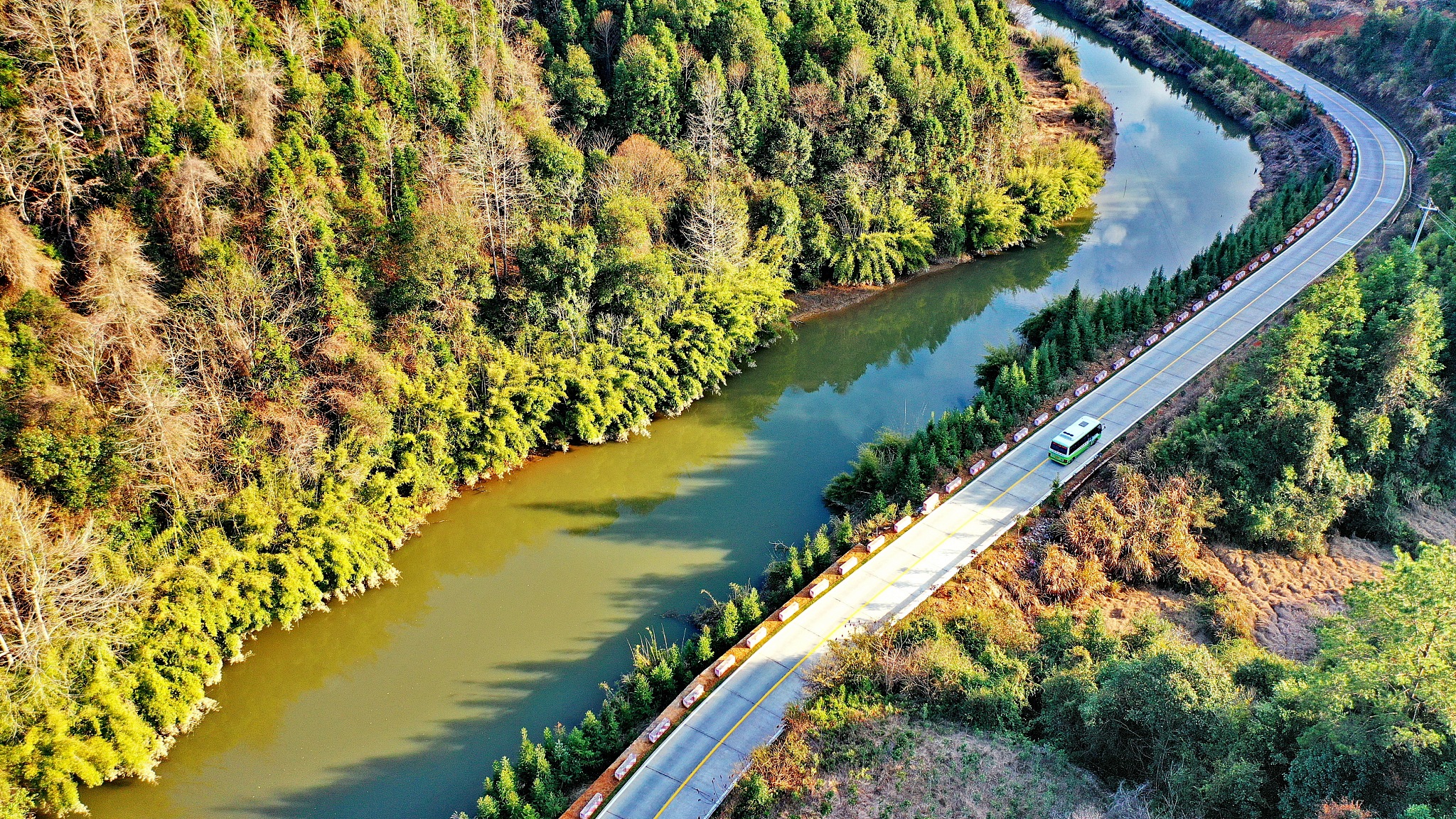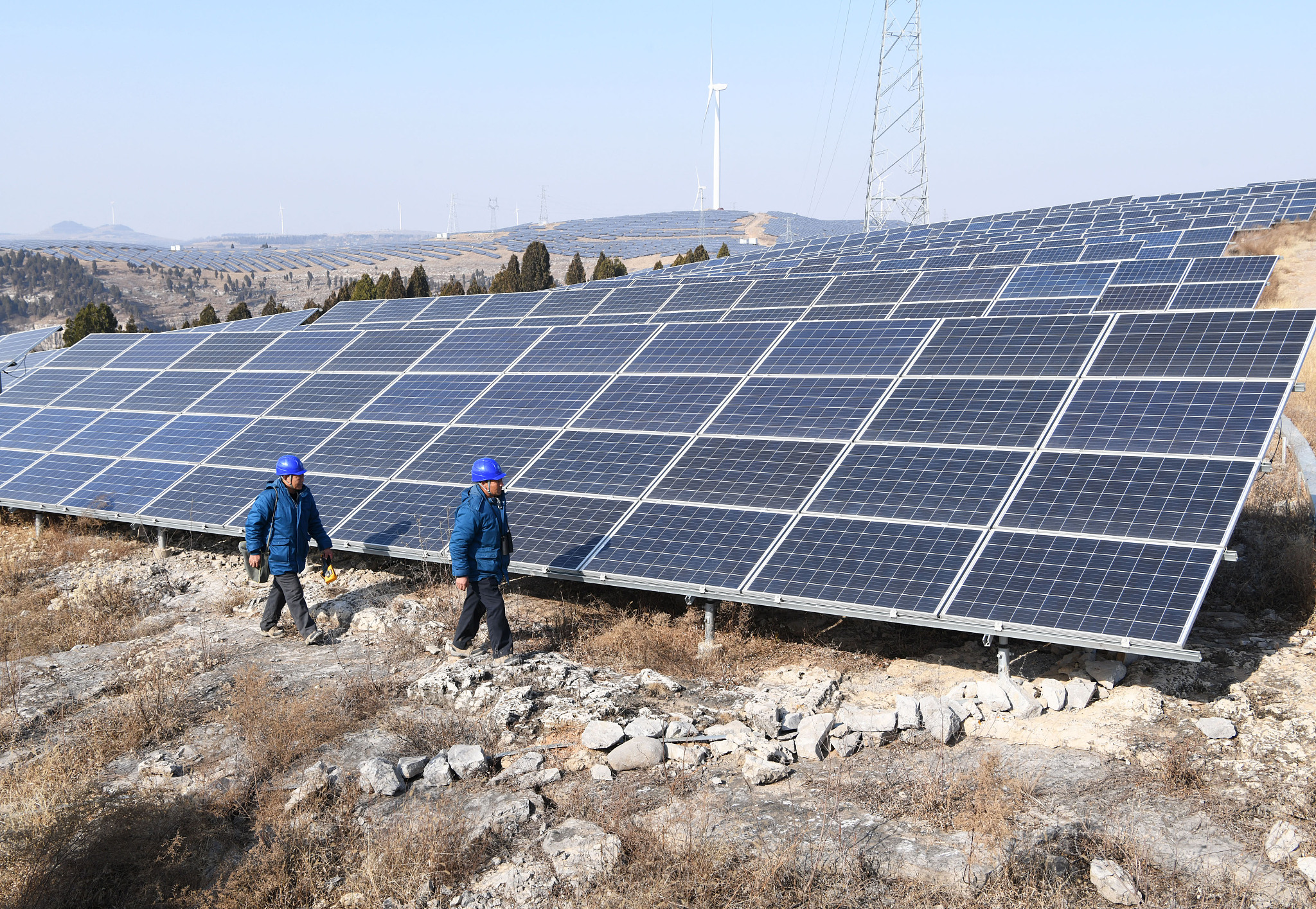
An electric bus runs on a rural road in Huichang County, Ganzhou City, south China's Jiangxi Province, February 22, 2021. /CFP
An electric bus runs on a rural road in Huichang County, Ganzhou City, south China's Jiangxi Province, February 22, 2021. /CFP
The State Council on Monday released a guideline for all-levels of governments to accelerate the development of a green and low-carbon circular economy, aiming to hit peak carbon emissions at around 2030 and carbon neutrality by 2060.
The guideline urged efforts to develop green and environmental protection industries, upgrade current industrial, agricultural and service sectors, strengthen the recycling and utilization of renewable resources, accelerate the green upgrading of infrastructure, promote green technology and improve environmental protection laws and regulations.
The paper also called for establishing a green and circular development production system. Industries such as iron and steel, petroleum, chemical, nonferrous metals, building materials, textiles, paper making, leather production should be upgraded as soon as possible, it said, adding that centers for the comprehensive utilization of resources should be built across the country to promote the reuse of industrial solid waste.

Workers inspect photovoltaic panels in Zaozhuang City, north China's Shandong Province, December 25, 2020. /CFP
Workers inspect photovoltaic panels in Zaozhuang City, north China's Shandong Province, December 25, 2020. /CFP
Governments should also fully implement the national regulation on the administration of pollutant discharge permits. The regulation, which will officially come into effect on March 1, is expected to standardize permit application procedures, tighten supervision and clarify the responsibilities of enterprises and public institutions.
Under the regulation, institutions or businesses involved in the discharge of pollutants must apply for permits. They will also be classified based on factors, including the amount of pollutant emissions and environmental impact.
The guideline also promotes the green development of the agriculture sector. For instance, the country will improve crop stalk and livestock waste utilization, reduce the pollution caused by thin plastic film and pesticides, and advocate water-saving technologies.

Workers in Chuzhou City, southeastern China's Anhui Province, replace coal-fueled heating equipment with geothermal energy, December 16, 2020. /CFP
Workers in Chuzhou City, southeastern China's Anhui Province, replace coal-fueled heating equipment with geothermal energy, December 16, 2020. /CFP
The paper also urges governments to further promote the energy sector's transformation, giving priority to energy conservation and greatly increasing the proportion of renewable energy, such as wind and photovoltaic power, while developing hydro, geothermal, marine, hydrogen and biomass power based on their local application.
Governments are also asked to speed up their efforts to improve living conditions in urban and rural areas. For example, communities in cities will be upgraded with energy-saving facilities while those in rural areas will be renovated with toilets, household garbage processing centers and sewage treatment bases.
The guideline also stressed that all governments should provide financial and policy support to public organizations, companies, universities and other institutions to foster and develop green technologies, such as energy-saving, recycling and waste management and wastewater treatment.
Energy and resource utilization efficiency in key industries and for key products is expected to reach an internationally-advanced level by 2035, with the green lifestyle deeply planted in people's minds and a steady decline in carbon emissions, the paper said.

